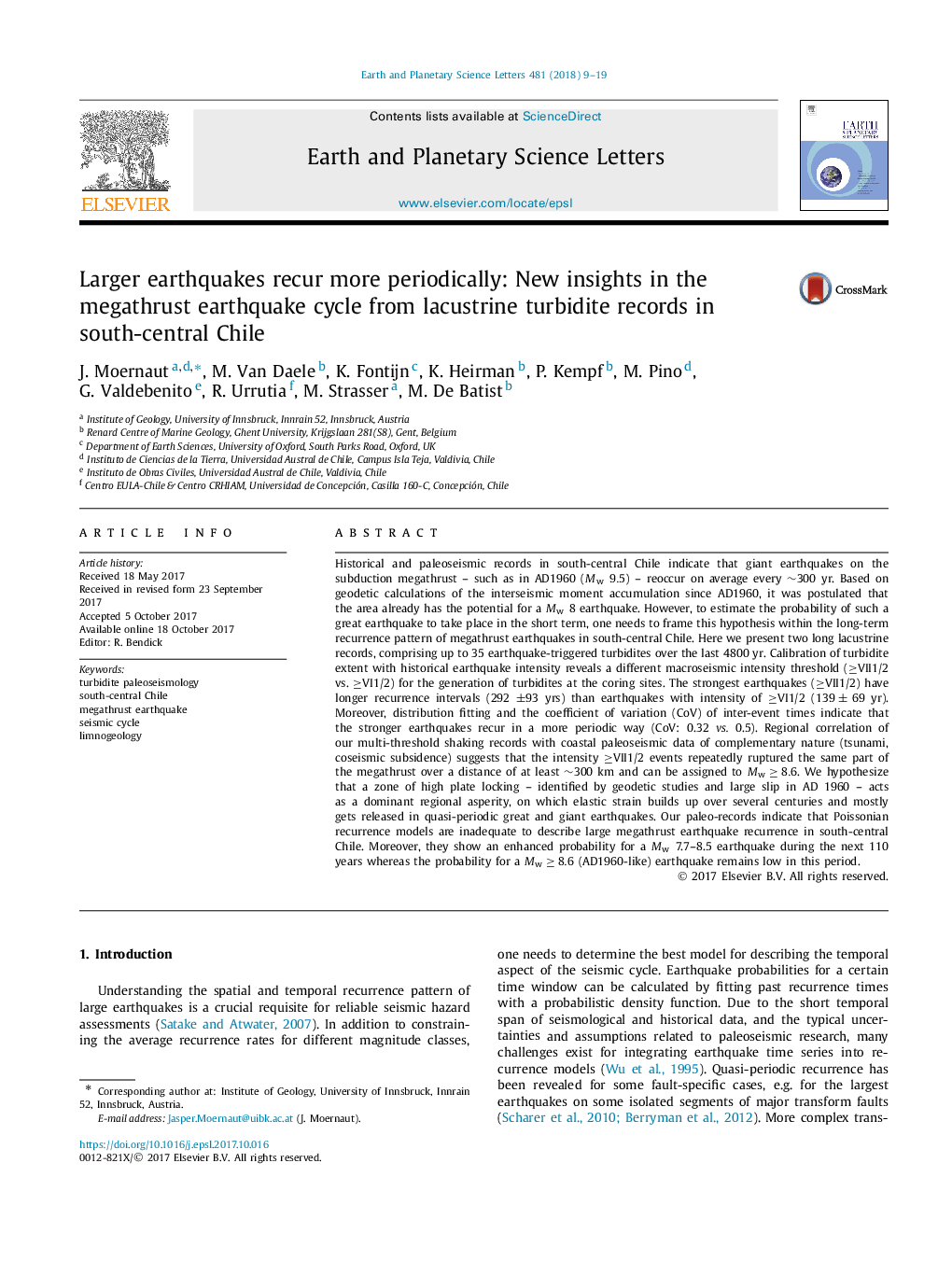| Article ID | Journal | Published Year | Pages | File Type |
|---|---|---|---|---|
| 8907315 | Earth and Planetary Science Letters | 2018 | 11 Pages |
Abstract
Historical and paleoseismic records in south-central Chile indicate that giant earthquakes on the subduction megathrust - such as in AD1960 (Mw9.5) - reoccur on average every â¼300 yr. Based on geodetic calculations of the interseismic moment accumulation since AD1960, it was postulated that the area already has the potential for a Mw8 earthquake. However, to estimate the probability of such a great earthquake to take place in the short term, one needs to frame this hypothesis within the long-term recurrence pattern of megathrust earthquakes in south-central Chile. Here we present two long lacustrine records, comprising up to 35 earthquake-triggered turbidites over the last 4800 yr. Calibration of turbidite extent with historical earthquake intensity reveals a different macroseismic intensity threshold (â¥VII1/2 vs. â¥VI1/2) for the generation of turbidites at the coring sites. The strongest earthquakes (â¥VII1/2) have longer recurrence intervals (292 ±93 yrs) than earthquakes with intensity of â¥VI1/2 (139±69yr). Moreover, distribution fitting and the coefficient of variation (CoV) of inter-event times indicate that the stronger earthquakes recur in a more periodic way (CoV: 0.32 vs. 0.5). Regional correlation of our multi-threshold shaking records with coastal paleoseismic data of complementary nature (tsunami, coseismic subsidence) suggests that the intensity â¥VII1/2 events repeatedly ruptured the same part of the megathrust over a distance of at least â¼300 km and can be assigned to Mwâ¥8.6. We hypothesize that a zone of high plate locking - identified by geodetic studies and large slip in AD 1960 - acts as a dominant regional asperity, on which elastic strain builds up over several centuries and mostly gets released in quasi-periodic great and giant earthquakes. Our paleo-records indicate that Poissonian recurrence models are inadequate to describe large megathrust earthquake recurrence in south-central Chile. Moreover, they show an enhanced probability for a Mw 7.7-8.5 earthquake during the next 110 years whereas the probability for a Mwâ¥8.6 (AD1960-like) earthquake remains low in this period.
Related Topics
Physical Sciences and Engineering
Earth and Planetary Sciences
Earth and Planetary Sciences (General)
Authors
J. Moernaut, M. Van Daele, K. Fontijn, K. Heirman, P. Kempf, M. Pino, G. Valdebenito, R. Urrutia, M. Strasser, M. De Batist,
